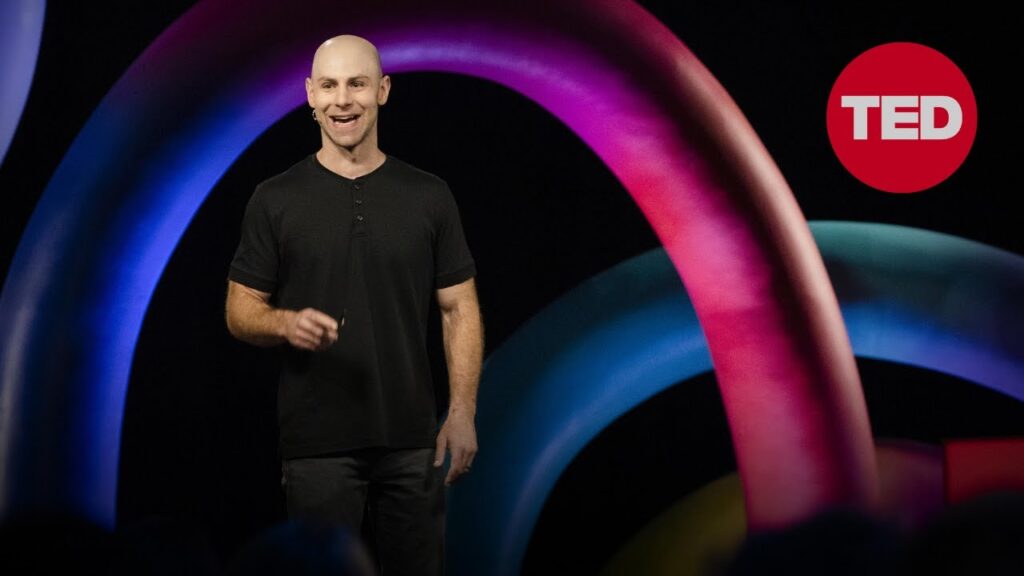Adam Grant begins his talk by sharing a unique approach to productivity—his “to-don’t list.” This list includes avoiding time-wasting activities such as scrolling on social media, checking the phone in bed, and watching TV aimlessly. Despite his best efforts, Grant found himself falling into these habits during the pandemic, leading to feelings of aimlessness and joylessness, which he identifies as “languishing.”
Understanding Languishing
Languishing is described as a state of stagnation and emptiness. It is a term coined by sociologist Corey Keyes and popularized by Grant. Unlike depression, languishing is a state where one feels stuck and unmotivated, yet not hopeless. Grant likens it to looking at life through a foggy windshield—you’re moving, but with no clear direction or purpose.
Personal Experience and Recognition
Grant shares his personal struggle with languishing during the pandemic, a time when many people experienced similar feelings due to prolonged isolation and uncertainty. This recognition led him to write an article about languishing, dubbing it the “neglected middle child of mental health.” The article resonated widely, as it provided a name and a framework to understand the pervasive sense of aimlessness many were feeling.
The Role of Flow in Combating Languishing
Grant emphasizes that the antidote to languishing is not toxic positivity but finding “flow”—a state of total immersion and enjoyment in an activity. Flow, a concept introduced by psychologist Mihály Csíkszentmihályi, is characterized by complete absorption in a task, leading to a loss of the sense of time and self. During the pandemic, Grant found his flow in playing Mario Kart with his family, an activity that brought joy and a sense of connection.
The Three Conditions for Achieving Flow
Grant outlines three key conditions for achieving flow: mastery, mindfulness, and mattering.
- Mastery: Achieving a sense of progress and competence. It can be as simple as experiencing small wins, such as playing a high-scoring word in Scrabble or successfully baking a loaf of sourdough bread. These small victories contribute to a sense of accomplishment and momentum.
- Mindfulness: Focusing one’s full attention on a single task. This is crucial in a world filled with distractions, where time confetti (fragmented, unproductive moments) prevails. Creating uninterrupted blocks of time for focused work can significantly enhance productivity and engagement.
- Mattering: Knowing that your work and actions make a difference to others. This sense of purpose can transform monotonous tasks into meaningful activities. For example, Grant conducted an experiment where fundraising callers who met beneficiaries of their work showed increased motivation and productivity.
Practical Steps to Overcome Languishing
To combat languishing and foster a state of flow, Grant suggests the following actionable steps:
- Identify Activities that Bring Flow: Find activities that fully engage you and bring joy. For Grant, it was playing Mario Kart. For others, it might be cooking, gardening, or any other immersive activity.
- Set Boundaries for Focus: Establish specific times for uninterrupted work to avoid distractions. This could be designated quiet times, similar to the “quiet time” policy in a Fortune 500 company that increased productivity.
- Seek Small Wins: Focus on achieving small, incremental victories in your daily tasks. These small wins can build momentum and boost motivation.
- Connect with Purpose: Identify how your work impacts others and seek out interactions that reinforce this connection. Knowing that your efforts matter can provide a deeper sense of fulfillment and motivation.
You Might Also Like:
- Discover Your Next Great Read: New York Times Best-Selling Books
- 7 Must-Read Books Before Turning 25
- Crack the Code to Wealth: “The Algebra of Wealth” by Scott Galloway
- Discovering True Wealth in The Book ‘The Wealth Money Cannot Buy’ by Robin Sharma (Book Summary)
- Book Summary: Just the Good Stuff by Jim VandeHei – Redefining Success
- 7 Must-Read Books for Money Management
